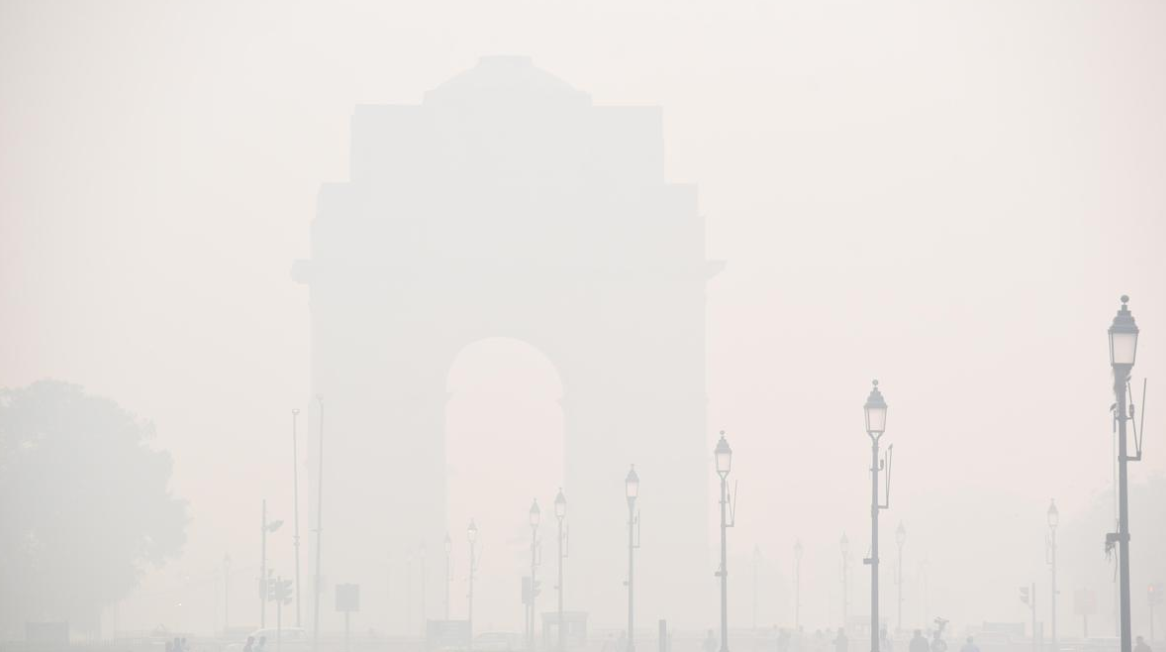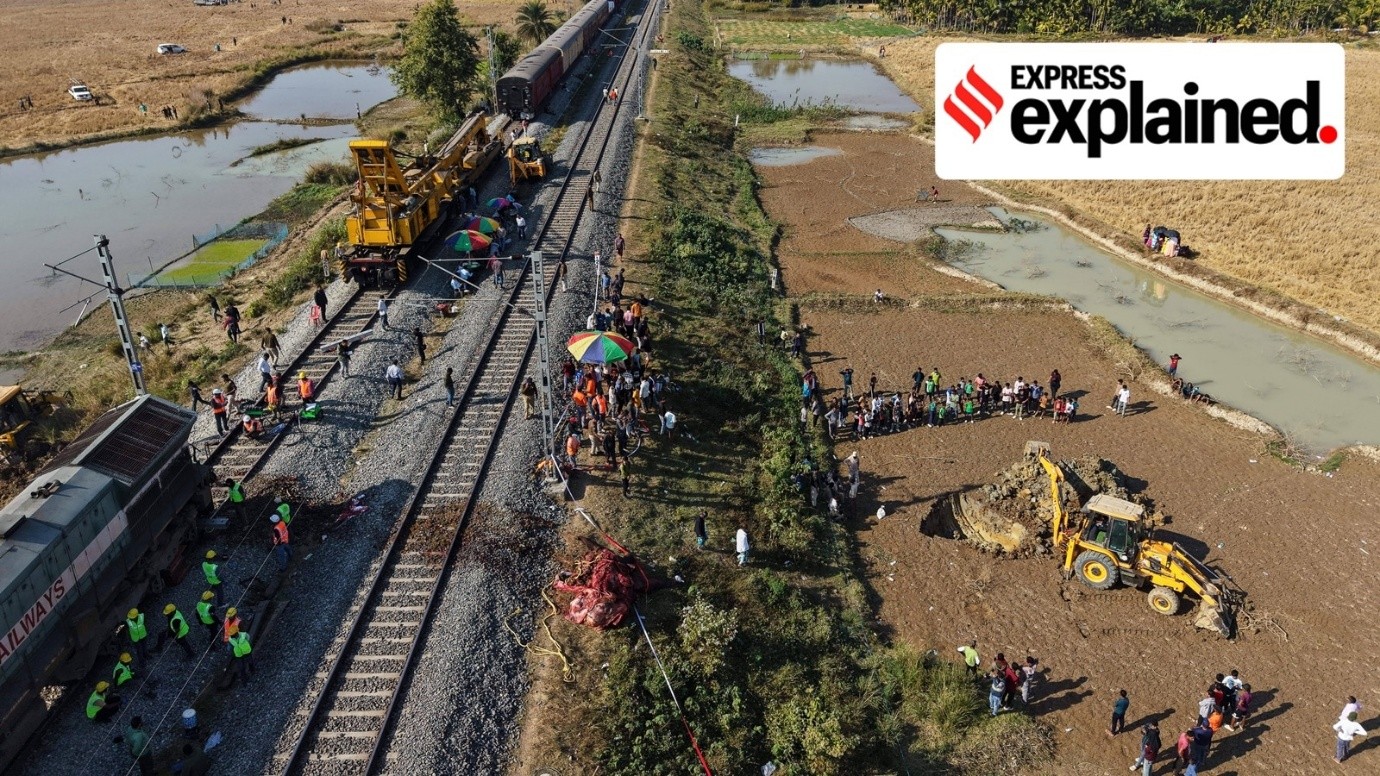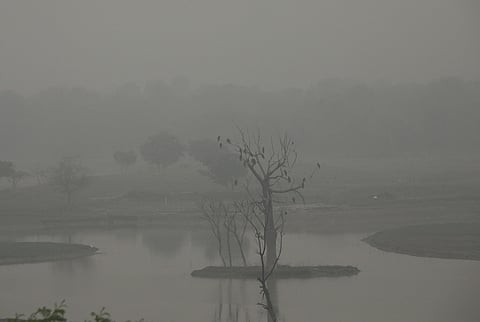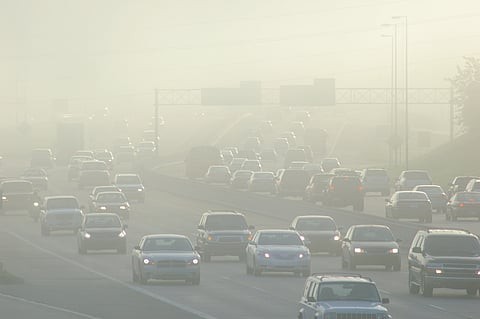Description
Copyright infringement not intended
Picture Courtesy: The Hindu
Context:
Recent failures in India’s environmental monitoring systems have exposed serious governance issues. Delhi’s Real-Time Air Pollution Network and Lucknow’s National Ambient Noise Monitoring Network, despite being launched with much fanfare, have been producing unreliable data, undermining both public trust and India’s international credibility.
Current Status:
- A recent report by the Comptroller & Auditor General of India (CAG) found that Delhi’s ambient air monitoring stations (CAAQMS) often do not meet the siting/operational criteria set by the Central Pollution Control Board (CPCB), making the data “unreliable”. (Source: The Print)
- It was reported that for 56% of the past 5 years, Delhi’s air was “toxic”, yet the AQI numbers may under‑state the severity because of monitoring flaws. (Source: The Print)
- According to the Centre for Science and Environment (CSE), Delhi needs about a 62% reduction in annual PM₂.₅ levels to meet national standards — indicating the monitoring network is active but the levels remain dangerously high. (Source: TOI)
- According to a report by CSIR‑Indian Institute of Toxicology Research (IITR), noise levels in Lucknow in several residential locations (e.g., Indiranagar) during day ranged ~70‑75 dB and at night up to ~85‑90 dB, which is well above the national permissible limits of 55 dB (day) and 45 dB (night) in residential zones. (Source: TOI)
- Over 6,500 complaints were registered with the UP “112” emergency line for loud noise (top number of calls being from Lucknow) between December and early 2024. (Source: Deccan Herald)
Evolution of monitoring system:
|
Period
|
Air Pollution Monitoring
|
Noise Pollution Monitoring
|
|
Pre-1980s
|
- Minimal awareness- Sparse data collection- No structured network
|
- Rarely recognized as a problem- No policies or monitoring network
|
|
1981–1990
|
- Air Act, 1981 empowers CPCB/SPCBs- Manual monitoring begins in big cities
|
- Noise included under Air Act- No independent framework or enforcement
|
|
1990s
|
- NAMP launched by CPCB- Monitored PM10, SO₂, NO₂ manually- Data reported yearly
|
- Still neglected- No national framework- Enforcement by police, not pollution boards
|
|
2000–2010
|
- 2009: PM2.5 added to NAAQS- Start of limited continuous monitoring (CAAQMS)
|
- Noise Rules, 2000 notified- Defined decibel limits by zone- Weak enforcement
|
|
2010–2015
|
- AQI launched (2014)- Real-time CAAQMS data begins online- Improved coverage
|
- CPCB starts National Noise Network (35 stations in 7 cities)- Data not public
|
|
2015–2020
|
- NCAP (2019) launched for 122 cities- More real-time stations- Tech adoption
|
- Noise gets attention during festivals, airports- Supreme Court acknowledges concerns
|
|
2020–2025
|
- Low-cost sensors deployed- AI/ML models used- Issues with data accuracy
|
- Some cities deploy real-time sensors- Studies by CSIR/IITs highlight violations
|
|
2025 (Now)
|
- Coverage expanded but quality questioned (CAG report)- Public trust eroding
|
- Still no nationwide network- Enforcement minimal- Data not consistently public
|
Challenges:
- Flawed Sensor Placement: Sensors in the Real-Time Air Pollution Network are often placed incorrectly (e.g., under tree cover, behind walls), which prevents them from capturing accurate pollution levels. (Source: Reuters)
- Misleading Reporting: Official Air Quality Index (AQI) data frequently reports pollution as "moderate" even when citizens are experiencing toxic smog and gasping for breath. (Source: SCC Online)
- Consequence: This manipulated or weak data compromises every pollution-related action plan (like rules on stubble burning or vehicular restrictions), delays necessary judicial intervention, and risks India's global commitments to organizations like the WHO. (Source: TOI)
- Faulty Network: The National Ambient Noise Monitoring Network has been flawed from the start, with sensors failing to capture actual decibel levels. (Source: The Hindu)
- Outdated Policy: India relies on the outdated Noise Pollution (Regulation and Control) Rules, 2000, which critics say is inadequate and has enforcement that is too weak to be a deterrent. (Source: SCC Online)
Government Measures:
Air Pollution
- The Air (Prevention and Control of Pollution) Act, 1981 was the first major law empowering the Central and State Pollution Control Boards (CPCB and SPCBs) to monitor and regulate air pollution.
- The National Ambient Air Quality Monitoring Programme (NAMP) was launched in the early 1990s to collect manual air quality data in urban areas.
- The National Air Quality Index (AQI) was introduced in 2014, providing an easy-to-understand, color-coded system for air quality levels.
- In 2019, the government launched the National Clean Air Programme (NCAP). It targets a 20–30% reduction in PM2.5 and PM10 levels by 2024 in over 120 non-attainment cities.
Noise Pollution
- Noise pollution was formally recognized with the Noise Pollution (Regulation and Control) Rules, 2000, under the Environment Protection Act.
- The National Ambient Noise Monitoring Network was launched in 2011 with 35 stations across 7 cities.
Institutional Bodies and Implementation
- Central Pollution Control Board (CPCB): The nodal agency for pollution monitoring and control in India.
- State Pollution Control Boards (SPCBs): Implement policies at the state level.
- Ministry of Environment, Forest and Climate Change (MoEFCC): Provides policy direction and funding.
Way Forward:
- Align standards with global health benchmarks: India must update its ambient air quality standards to match the World Health Organization (WHO) guidelines—for example, annual PM₂.₅ down to 5 µg/m³.
Expand and improve monitoring infrastructure
- For air: The Central Pollution Control Board (CPCB) reports 966 stations in 419 cities/towns under NAMP as of Nov 2024. (Source: Central Pollution Control Board)
- For noise: The network exists but is limited, and data is outdated (last full datasets 2015‑17). (Source: Central Pollution Control Board)
- Enhance source‑apportionment & predictive tools: To act effectively, policymakers need to know which sources (industrial, vehicular, crop‑burning) contribute how much. AI/forecasting systems are being developed (e.g., Mumbai’s AIRWISE system).
- Enhance source‑apportionment & predictive tools: To act effectively, policymakers need to know which sources (industrial, vehicular, crop‑burning) contribute how much. AI/forecasting systems are being developed (e.g., Mumbai’s AIRWISE system).
- Strengthen enforcement & public‑health integration
Monitoring data must translate into action—fines, closures, public advisories. For noise, newer penalty regimes are being proposed.
Source: The Hindu
|
Practice Question
Q. "Scientific integrity and public trust in environmental data are essential for effective pollution control. In light of recent reports, critically examine the state of air and noise pollution monitoring systems in India. Suggest a way forward."
|
Frequently Asked Questions (FAQs)
The Central Pollution Control Board (CPCB) and respective State Pollution Control Boards (SPCBs) are the primary agencies responsible for monitoring and regulating both air and noise pollution under the Ministry of Environment, Forest and Climate Change (MoEFCC).
NAMP is a long-running program by CPCB to monitor air quality in India through manual stations. It tracks key pollutants like PM10, PM2.5, SO₂, NO₂, and CO in urban and industrial areas.
- Reports (e.g., CAG 2025) show:
- Poor placement of sensors (under trees or away from busy roads)
- Lack of third-party audits
- Manipulation or underreporting of data











